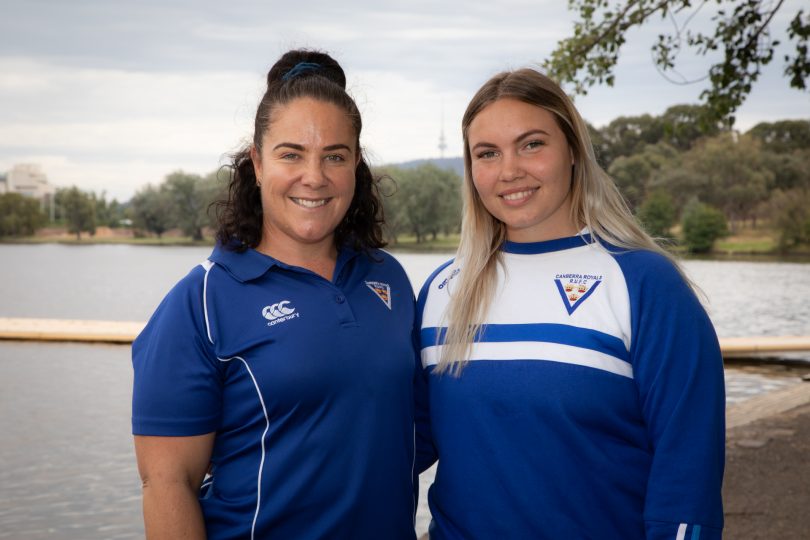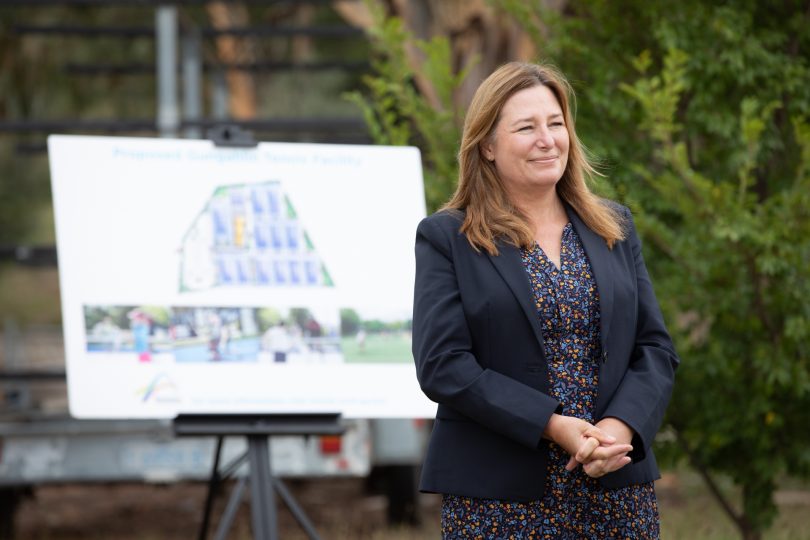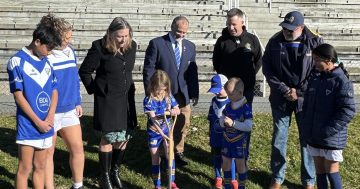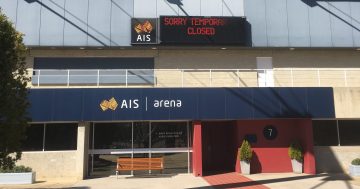
Louise Burrows from the Canberra Royals has been playing rugby since 1995. Photo: Michelle Kroll.
Louise Burrows has played rugby with the Canberra Royals since 1995, and also steps up as a prop for the Brumbies, and for the first time in a quarter of a century, she will finally be able to use a female change room with her team instead of changing on the sidelines or in the men’s sheds.
“Since my first year of rugby, the facilities have not changed at all,” Ms Burrows said.
“There has been no progression as the women’s game has progressed and grown significantly, so this is huge for us to have our own changeroom in the Royal’s community.
“It is really awkward because you often need to change your jersey on the sideline – that is a regular occurrence – but there have been times that there are no change rooms or facilities around Canberra, so you are changing your shorts on the sideline as well.
“It can be quite uncomfortable and something that is not very inviting for young girls coming through to have to do.”
Women’s sheds, lighting upgrades and new pavilions are more than just the physical infrastructure for the players, they signify the recognition that women’s sport is now receiving through a variety of funding initiatives from governments.

Louise Burrows and Niki Paterson have welcomed the additional funding for new facilities. Photo: Michelle Kroll.
Niki Paterson, an Indigenous player from the Northern Territory who has come down to Canberra to join the club this season, relayed how it felt to have women’s sport appreciated and recognised with new amenities that many of the men take for granted.
“It gives you more drive to keep going and keep playing,” she said.
“When I first started, women’s sport was not really big or announced, and now that we are getting funding for these new facilities, it definitely grows the game and the sport.
“We play because we also want to grow the game, so to see this facility being built, it is like all the hard work over the years is coming together and it is really exciting to be a part of it still.”
For many women and people with children, changing at home is not an option, Ms Burrows said.
“It is not like we get changed at home and go to the ground, some of us are mums so we are at sporting events with our own children or we come from work,” she said.
“Often in the changeroom, it is also where you come together as a team and you have that bond, play some music, dance and really get that vibe.
“To be able to do that and then walk out onto the field as a team will be huge.”
The ACT Government is putting aside $1.25 million over the next two years to plan and design new sporting facilities across the Territory.
This includes $400,000 for planning and design works for a new permanent home for dragon boating at Grevillea Park on Lake Burley Griffin with a new boathouse, storage facility and a spectator area.

Sports Minister Yvette Berry has announced $1.25 million for local sports facilities in the upcoming ACT Budget. Photo: Michelle Kroll.
When asked why it took so long for community sports clubs in Canberra to have female-specific changing rooms, Sports Minister Yvette Berry said the age of Canberra’s sporting infrastructure meant female participation was not in mind when the facilities were built.
“Some of the sports facilities in the ACT are quite old, and they were built for men, by men, for men’s sport,” Ms Berry said.
“There was never any consideration that women would be playing the sports they are participating in today.
“What we are seeing now is real growth in women’s sport. Women and girls broadening their horizons and playing the sports that they want to.
“We need the facilities that meet this new change to our sports. Changing on the sideline, or in the car or in the men’s changerooms is not OK.”
















